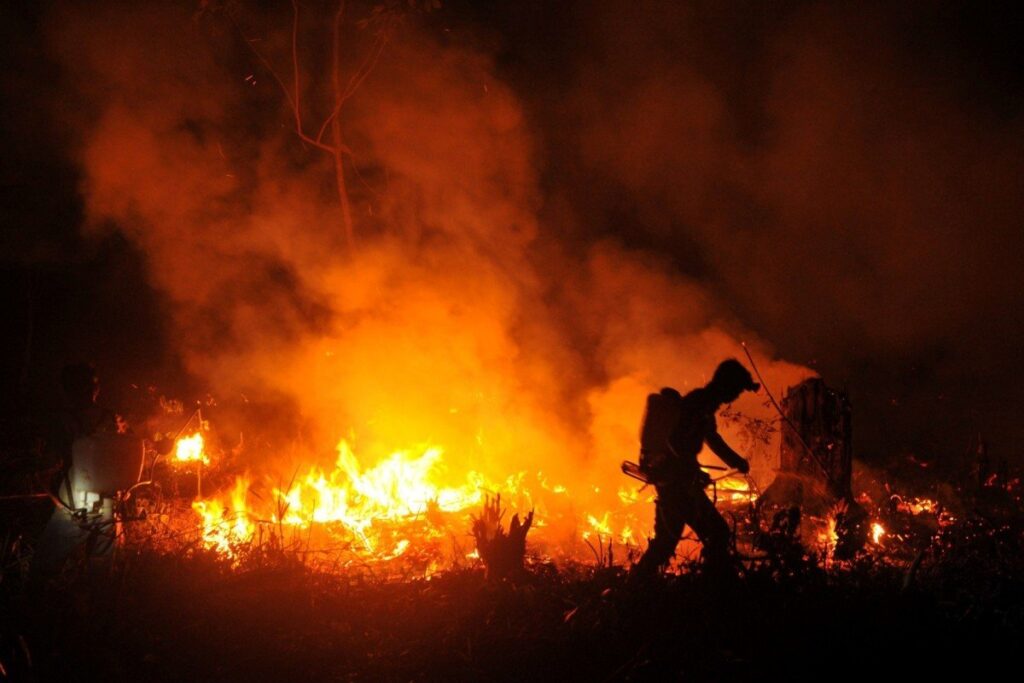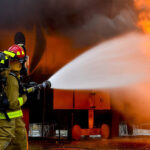So, there could be a possibility that many people are not going to take part in fighting against a fire. These people need to evacuate. Hence, there needs to be an evacuation plan in place. This evacuation plan should be in place – before the incident of fire.
The evacuation plan should have the following items identified, and, well communicated to everybody: – A command and control structure, which should be effective and operational as soon as a fire is reported – Assembly area – Mechanism and responsibility for head-count etc.
In case of a fire, one should never use escalators (irrespective of the height of building which is being evacuated). Escalators could be unreliable – due to failure of electrical circuits which operate it, or, it could have mechanical failure – due to snapping of wires/ropes – causing it to go into a free-fall. At the minimum, there is a high risk of smoke inhalation, as, smoke has a tendency to go up, and, hence, will always try to enter escalator pits – from where, it can go all the way up to the top, without any hindrance.
If there is lot of smoke, crawl on the floor. Because of smoke’s tendency to go up, even during very dense smoke conditions, the lower few inches of the ground are expected to be relatively free of smoke.
To reduce smoke inhalation, put a wet handkerchief to cover your nose. If there is no water available, use your own saliva to wet a small portion of the handkerchief, and, use that portion to cover your nostrils.
If you can go to an open-area (for example uncovered terrace, open ground etc.), there will be no risk of smoke-inhalation. However, use your own judgment if you decide to go to the terrace of a high-rise building. While there will be no risk of smoke-inhalation, rescue efforts could become difficult and is dependent on the level of sophistication that the local fire department has (e.g. access to snorkel, very long ladders-capable of reaching high-rise buildings, rescue-helicopters etc.).
Always evacuate in an orderly manner. A building housing 200 or so people (normal, healthy adults) across 3-4 floors with a single exit can easily be evacuated in less than 2-3 minutes if done in an orderly manner. If people push and shove, stampede can occur, causing much more injury, and, it might take much longer to evacuate. Worse: Backing up might be impossible. Say, while, people are evacuating towards an exit, and, its found that – the specific exit is blocked, there might be a need to backup. If the evacuation is not proceeding in an orderly manner, it might not be possible to back-up; as people towards the end of the evacuation queue (who are not aware of the blockage at the exit) will try to push forward, while, those at the front of the queue (who are aware of the blockage) want to back-up.
Since, panic might set in, during a fire – thereby clouding people’s thought process and ability to think reasonably, its highly likely that during a fire, people forget these simple tenets, and, in their attempt to rush out, actually create chaos and disorderliness. Thus, its important that regular mock evacuation-drills are carried out. That will cause people to behave in a much more orderly manner – during an actual fire.
While evacuating, do a quick survey to see, if there is somebody around you, who might need some assistance, e.g. somebody who is old, too weak, injured, child, any disability etc. If possible, provide assistance to such a person. Even if you yourself are not in a position to provide assistance, at least request for help on this person’s behalf.
If an area is already clear, while, evacuating, close the door behind you. It will serve several purposes:
1. Will isolate the area, thereby, causing an impediment to the spread of the fire.
2. Will save time for others, who might want to recede the area.
While, you should close the door, lock it only if you are absolutely sure that there is nobody inside. Because, if there was even a single person inside it, and, you have locked it, the chances of that person being rescued is diminished by a huge factor.
If you are inside a closed door – with fire outside:
Feel the inside of the door with your hand. If the door feels hot, many a times, it might be safer to stay inside. At this time, whether your should stay inside, or, still venture out could be a judgment call, depending on: how long do you expect a rescue team to arrive and/or alternative avenues (e.g. possibility of jumping from the window). If you are on the high floor of room, with windows having strong grills and the local fire-department is not well-equipped/staffed, then, the time that you spend inside the room is actually going against you – as the fire outside becomes more vigorous. If you do decide to stay inside the room, wet towels, bed sheets etc. and put below the doors to prevent smoke etc. from coming inside your room.


